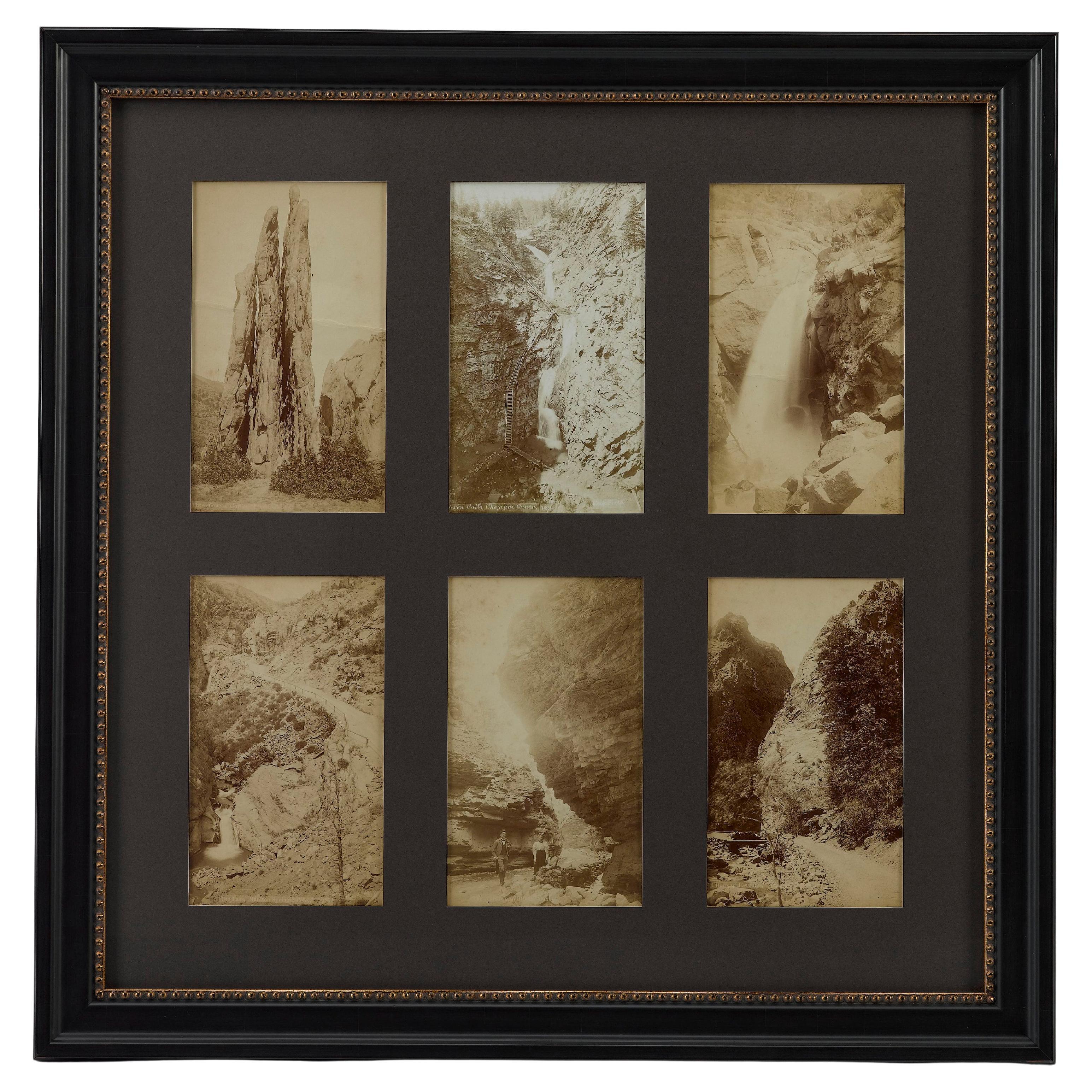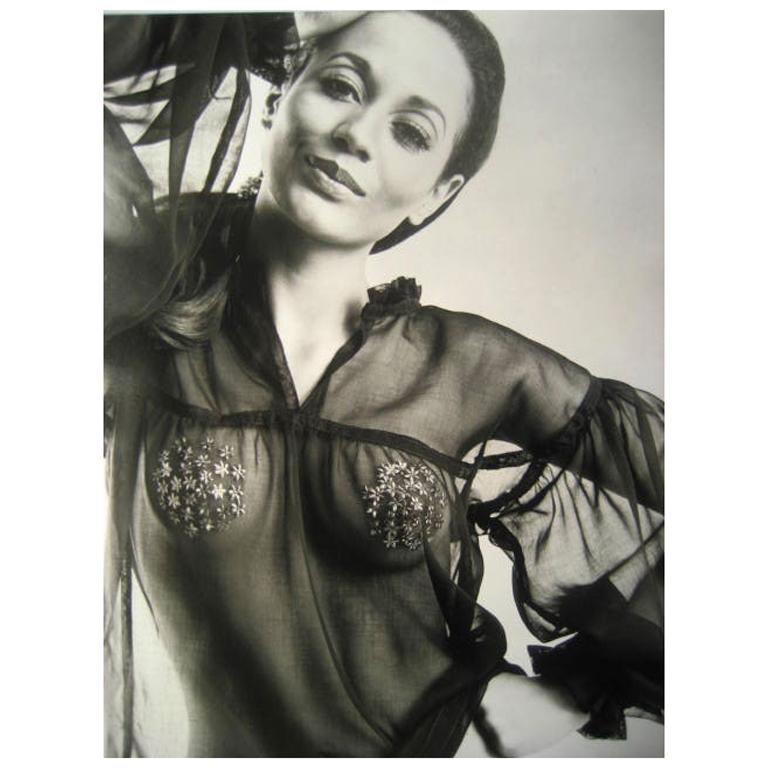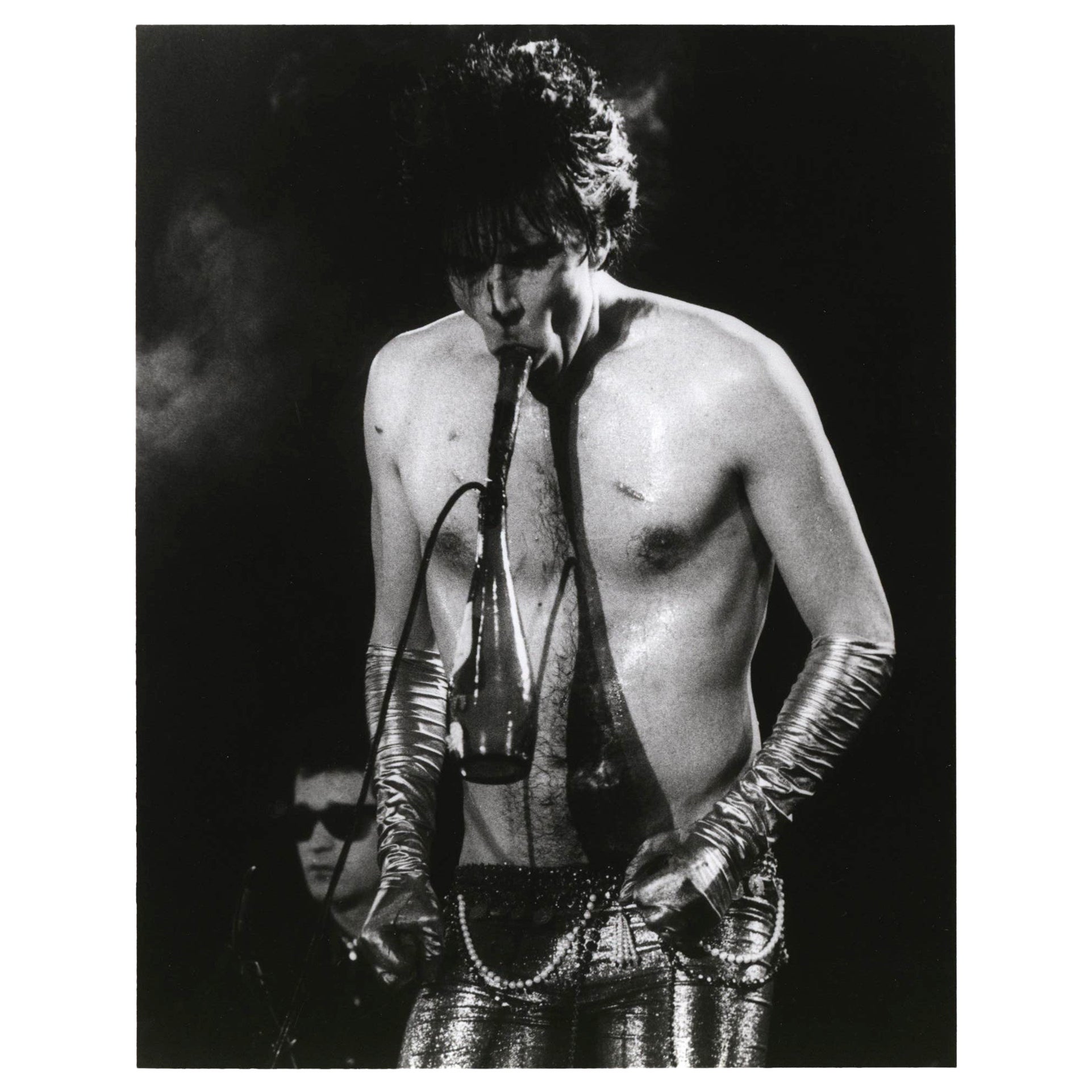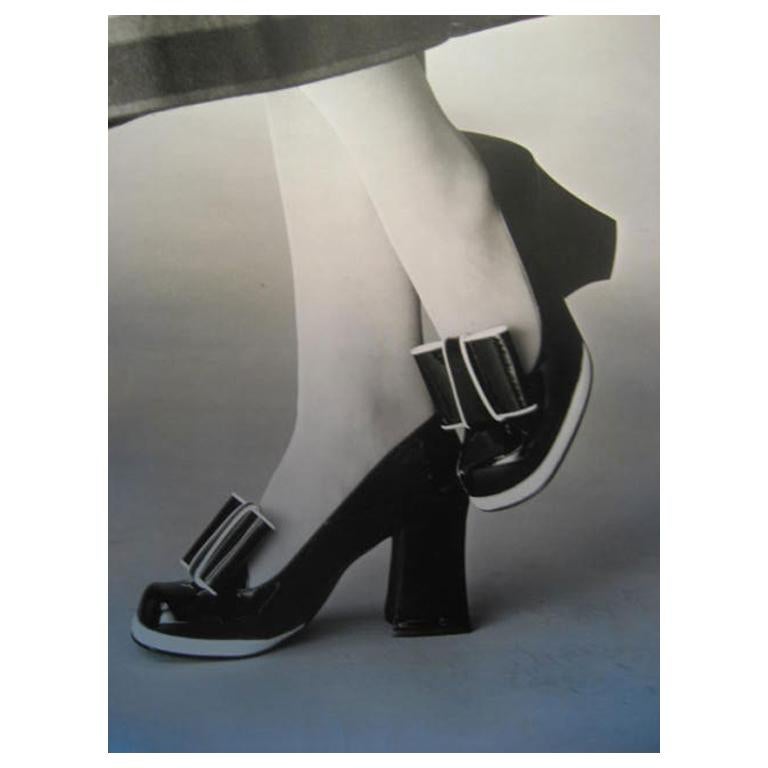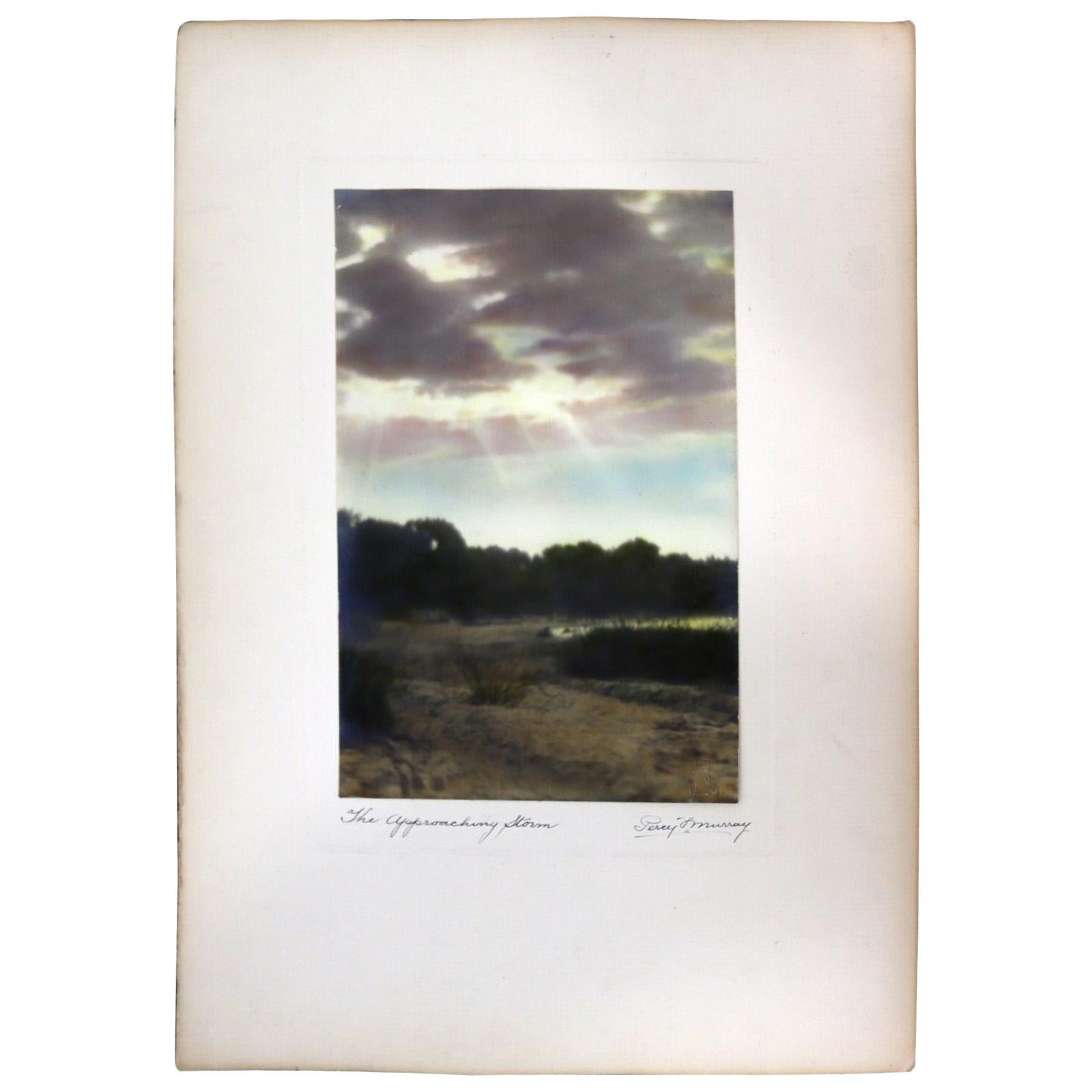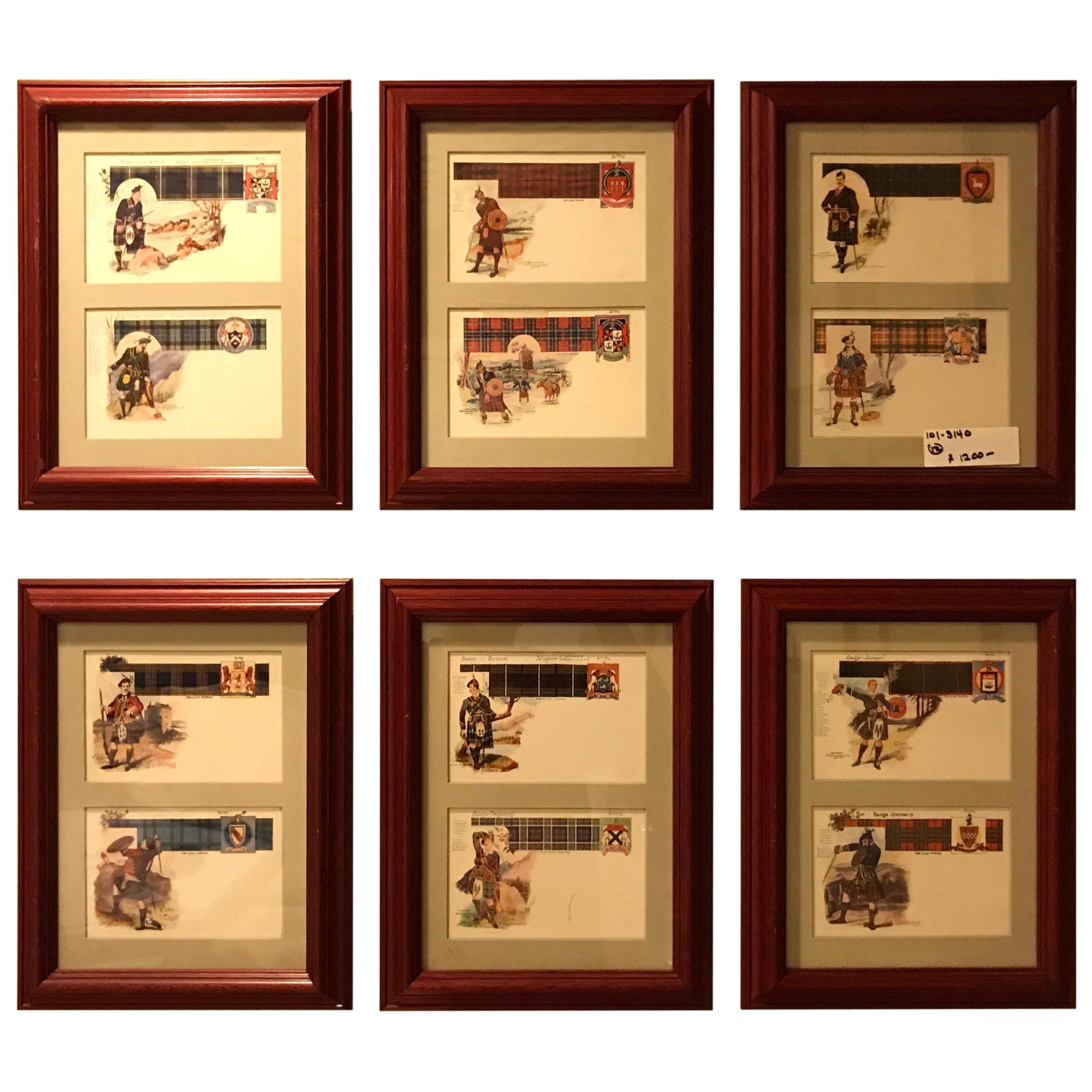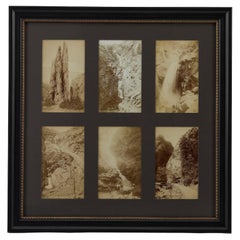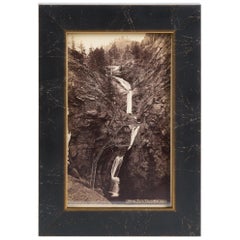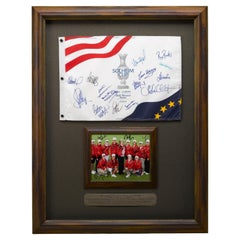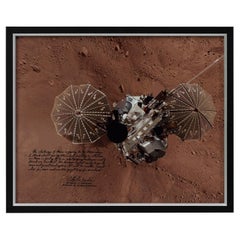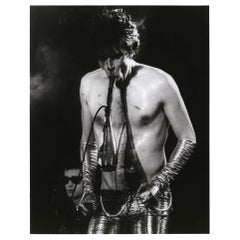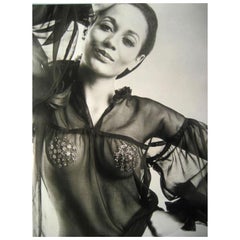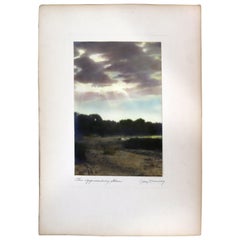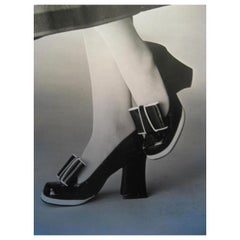Items Similar to Vintage Garden of the Gods Postcards by Hook Photo, 1890
Video Loading
Want more images or videos?
Request additional images or videos from the seller
1 of 8
Vintage Garden of the Gods Postcards by Hook Photo, 1890
About the Item
Presented is a collage of three vintage cabinet card photographs of the Garden of the Gods, in Colorado dating to the 1890s. The sepia toned photographs were published by W.E. Hook View, Stationery and Book Company. The photographs capture views of the Gateway, the Ruins of Montezuma’s Temple, and the park’s iconic rocky Formations.
The Garden of the Gods red rock Formations were created during a geological upheaval along a natural fault line millions of years ago. Archaeological evidence shows Prehistoric inhabitants as early as 1330 BC and Native American use as early as 250 BC. The Utes' oral traditions tell of their creation at the Garden of the Gods and petroglyphs have been found in the park that are typical of early Utes. The Old Ute Trail went past Garden of the Gods to Ute Pass and led later explorers through Manitou Springs.
16th century Spanish explorers and later American explorers and trappers traveled through the area, including Lieutenant John C. Frémont and Lieutenant George Frederick Ruxton, who recorded their visits in their journals. In 1879, Charles Elliott Perkins purchased 480 acres of land that included a portion of the present Garden of the Gods. Upon Perkins' death, his family gave the land to the City of Colorado Springs in 1909, with the provision that it would be a free public park. Helen Hunt Jackson wrote of the park, "You wind among rocks of every conceivable and inconceivable shape and Size. all bright red, all motionless and silent, with a strange look of having been just stopped and held back in the very climax of some supernatural catastrophe."
A style of photograph first introduced in 1863 by Windsor & Bridge in London, the cabinet card is a photographic print mounted on stiff card stock. The Cabinet card got its name from its suitability of display in parlors, especially in cabinets. It was a popular medium for family portraits and landscapes and many cabinet cards were mailed to friends and family living afar or abroad. Cabinet cards reached their peak of popularity in the 1870s through the 1890s. They continued to be made into the 1900s, albeit less frequently, once traditional postcards became popular.
Between 1877 and 1881, photographer William Edward Hook (1833-1908) traveled and captured scenic vistas throughout Montana and Wyoming, from his home base in Missoula. He then moved to the Pikes Peak area of Colorado Springs and set up his photography studio. Early cabinet cards of his are stamped on the verso with his address "W. E. View Stationary and Book Company, 27 South Tejon St., Colorado Springs, Colorado" and advertise both photography supplies and development, give a list of popular photographs, and boast over "2000 Photographic Views of Colorado scenery, Artistically Colored to Choose From."
Condition:
Overall, very good condition. Three vertical sepia albumen photographs, each mounted on a stiff card. Some toning to edges. Approximately 8” x 5" each. Framed Dimensions: 21 1/2" H x 13 1/2" W x 1 1/4" D.
- Dimensions:Height: 21.5 in (54.61 cm)Width: 13.5 in (34.29 cm)Depth: 1.25 in (3.18 cm)
- Materials and Techniques:
- Place of Origin:
- Period:
- Date of Manufacture:1890
- Condition:Additions or alterations made to the original: Archival framing by Rio Grande Framing in Colorado Springs, CO in November of 2022. Wear consistent with age and use. Minor fading.
- Seller Location:Colorado Springs, CO
- Reference Number:Seller: PR465gg1stDibs: LU909733397502
About the Seller
4.9
Platinum Seller
Premium sellers with a 4.7+ rating and 24-hour response times
Established in 2010
1stDibs seller since 2011
453 sales on 1stDibs
Typical response time: 1 hour
- ShippingRetrieving quote...Shipping from: Colorado Springs, CO
- Return Policy
Authenticity Guarantee
In the unlikely event there’s an issue with an item’s authenticity, contact us within 1 year for a full refund. DetailsMoney-Back Guarantee
If your item is not as described, is damaged in transit, or does not arrive, contact us within 7 days for a full refund. Details24-Hour Cancellation
You have a 24-hour grace period in which to reconsider your purchase, with no questions asked.Vetted Professional Sellers
Our world-class sellers must adhere to strict standards for service and quality, maintaining the integrity of our listings.Price-Match Guarantee
If you find that a seller listed the same item for a lower price elsewhere, we’ll match it.Trusted Global Delivery
Our best-in-class carrier network provides specialized shipping options worldwide, including custom delivery.More From This Seller
View AllVintage Colorado Springs Postcards by Hook Photo, 1890
Located in Colorado Springs, CO
Presented is a collage of six vintage cabinet card photographs of Colorado Springs and its surrounding areas, dating to the 1890s. The sepia toned...
Category
Antique 1890s American Photography
Materials
Paper
Seven Falls Colorado Springs Antique Photographic Postcard, circa 1880
Located in Colorado Springs, CO
Presented is an antique photographic postcard of Seven Falls, Colorado, from 1880. Postcard production blossomed in the late 1800s and early 1900s, as railroads opened up much of the Western frontier to new and exciting travel opportunities.
Seven Falls is one of Colorado’s most captivating natural wonders. Located at the base of the Front Range, this magnificent series of waterfalls is situated in a 1,250-foot-wall box canyon between the towering Pillars of Hercules and boasts a 181-foot drop of falling water.
Seven Falls was originally part of land given to Nathan Colby in 1872 as part of the Homestead Act of 1862. The Homestead Act granted 160 acres of surveyed land to pioneers in the west, with claimants required to “improve” the plot by building a dwelling and cultivating the land. Mr. Colby promptly sold the track of land to James Hull...
Category
Antique 1880s American Historical Memorabilia
Materials
Paper
Solheim Cup Matches U.S. & European Team Signed Photo & Flag, 2009
Located in Colorado Springs, CO
Presented is an autographed collage celebrating the women golfers of the 2009 Solheim Cup U.S. and European teams. The 11th Solheim Cup Matches were held Au...
Category
Early 2000s American Sports Equipment and Memorabilia
Materials
Fabric, Paper
Charlie Duke Signed Photograph of the Phoenix Lander on Mars
Located in Colorado Springs, CO
Presented is a photograph of the Phoenix Lander on Mars, signed and inscribed by Apollo 16 moonwalker Charlie Duke. In the inscription, Duke shares his thoug...
Category
Early 2000s American Historical Memorabilia
Materials
Paper
Original Edward S. Curtis Photogravure, "The Klamath Hunter" 1923
By Edward S. Curtis, 1868-1952
Located in Colorado Springs, CO
Presented is a beautiful photogravure showing a Klamath man hunting from a dugout canoe. This image is Plate 458 from Volume 13 of Edward Curtis' epic project The North American Indian. The photogravure was published in 1923 by Suffolk Engr. Co., in Cambridge, MA. The Klamath people are from the inland region of Northern California and Southern Oregon. Their oral history records the volcanic eruption that created Crater Lake over 7000 years ago
Edward S. Curtis created one of the most enduring and iconic visual records in the history of the photographic medium. He was an award-winning artist, a consummate craftsman, a visionary, an intrepid entrepreneur, and was highly regarded as a respected ethnographer and publisher.
Curtis began photographing Native Americans in the mid-1890s and selling these images in his successful downtown Seattle studio. One of his earliest models was Princess Angeline, the aged daughter of chief Sealth, the Suquamish Indian after whom Seattle is named. At the National Photographic Convention of 1899 Curtis was awarded the grand prize for three of his soft-focused, sepia-toned images of Puget Sound Native Americans: Evening on the Sound, The Clam Digger, and The Mussel Gatherer.
Curtis spent the summer of 1900 with George Bird Grinnell observing the Sun Dance at an encampment of Blood, Blackfeet, and Algonquin in Montana. This was a pivotal experience for Curtis, confirming his desire to study and photograph the Native tribes of North America. A trip to visit the Hopi reservation in Arizona a few months later further fueled his enthusiasm.
Curtis envisioned a plan to create a massive scholarly and artistic work that would document the tribes west of the Mississippi, their ceremonies, beliefs, daily life, and landscapes. In 1906, Curtis approached railroad tycoon J.P. Morgan to request financial assistance for his project. Morgan agreed to pay him a total of $75,000, or $15,000 a year for five years. Morgan and Curtis decided that Curtis' masterwork, The North American Indian, would be a set of 20 volumes of ethnographic text illustrated with high quality photoengravings taken from his glass plate negatives. Each of these volumes would be accompanied by a portfolio of large size images, all sumptuously bound in Moroccan leather. The papers used for printing would also be of the best quality: a Dutch etching stock by Van Gelder, a Japanese vellum, and for the most discerning subscribers, a translucent Japanese tissue paper. To fund publication, Curtis would sell subscriptions at approximately $3,000 per set, with a total of 500 sets to be published.
An ambitious and extensive project, Curtis spent much of his life documenting as many Native tribes as possible. The importance and the urgency of the task was clear to him, as he wrote in the introduction to his first volume of The North American Indians in 1907, "The information that is to be gathered ... respecting the mode of life of one of the great races of mankind, must be collected at once or the opportunity will be lost." In 1930, some 24 years after his initial request for funding, the last two volumes, Vol. 19 and Vol. 20, were published and The North American Indian project was finally completed. Curtis took over 40,000 photographs and made over 10,000 wax cylinder...
Category
Vintage 1920s American Photography
Materials
Paper
Charlie Duke Signed Photograph of Apollo 16 Moonwalk
Located in Colorado Springs, CO
Presented is an Apollo 16 mission photograph, signed and inscribed by Apollo 16 moonwalker Charlie Duke. The photograph shows Duke collecting lunar samples n...
Category
Vintage 1970s American Modern Photography
Materials
Paper
You May Also Like
The Cramps Lux Interior Photograph (vintage darkroom photo)
By Mick Rock 1
Located in Brooklyn, NY
Lux Interior The Cramps circa early 1980s:
Stunning vintage original darkroom photograph of the legendary Lux Interior - the legendary punk and rock music icon & lead singer of The Cramps.
Silver gelatin print.
Dimensions: 8 x 10 inches. Circa early 1980s.
Minor signs of handling. Good to very good overall vintage condition.
Unsigned from unknown photographer.
"The Cramps were a wonderfully wild 'n' wacky punk alternative psychobilly rock 'n' roll band. The group was first formed by lead singer Lux Interior and guitarist Poison Ivy Rorschach in 1976 in New York City (Interior and Ivy initially crossed paths in Sacramento, California in 1972). The other original band members were drummer Miriam Linna and guitarist Bryan Gregory. The Cramps are distinguished by their deliciously campy 'n' crazy sensibility, wholehearted passion for both old-fashioned straight 'n' simple retro 50s rock music and entertainingly trashy grade B movies, and an appropriately raw 'n' bluesy full-throttle raucous rollicking sound. Their albums usually consisted of insanely inspired covers of obscure songs and delightfully deranged original compositions.
The Cramps started out playing gigs at such legendary Big Apple punk venues as CBGB's and Max's Kansas City. In June 1978 they performed a free benefit concert for the patients at the California State Mental Hospital in Napa Valley. The group released their debut EP "Gravest Hits" in 1979. This was followed by the full-length album "Songs the Lord Taught Us" in 1980. The Cramps relocated to Los Angeles in 1980. They performed in concert all over the world (they even opened for the Police in Europe in 1980!) and recorded over ten albums in a career which spanned over thirty years." (source: Woody Anders)
Related Categories
CBGB. The Ramones. The Clash. Blondie. Rock Photography. Punk Photography...
Category
Vintage 1980s Photography
Materials
Paper
$340 Sale Price
20% Off
A Vintage Fashion Photo by John Adriaan
By John Adriaan
Located in St.Petersburg, FL
A great, vintage, fashion photo by J. Adriaan. Matted-frame not included.
Category
Vintage 1960s English Photography
Percy Murray The Approaching Storm Signed Vintage Photo
Located in Keego Harbor, MI
For your consideration is gorgeous and rare antique hand-colored photo print (gelatin silver) titled "Approaching Time" from circa the 1920's, and hand-signed by Percy Murray (17.25x...
Category
Vintage 1920s Photography
Materials
Paper
A Vintage Fashion Photo by J.Adriaan
By John Adriaan
Located in St.Petersburg, FL
A classic, vintage photo of shoes, ca' 1969, by J.Adriaan.
Category
Vintage 1960s English Photography
Set of 12 Custom Finely Framed Scottish Postcards, Vintage Catherine Reiss Inc
Located in Manhasset, NY
Set of 12 custom framed Scottish postcards, vintage Catherine Reiss Inc. Six framed group of cards with two in each frame.
Category
Late 20th Century Modern Political and Patriotic Memorabilia
Materials
Glass, Wood
"The Red Shoes" Photo
Located in London, GB
Original British Studio production photos featuring Moira Shearer in the films famous dance scene. The film directed by the famous duo Michael Powell and...
Category
